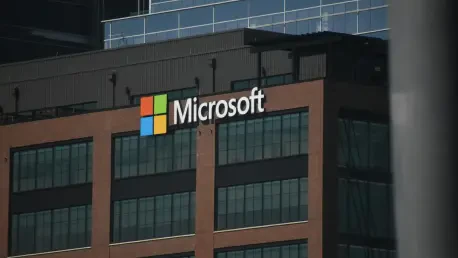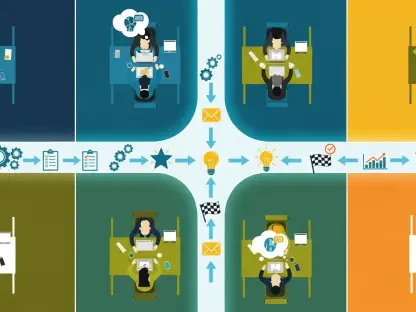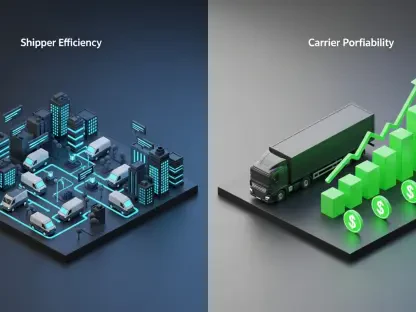Microsoft has announced a significant restructuring of its human resources strategy with a focus on increasing productivity and accountability through new performance management tools. This initiative, introduced by Chief People Officer Amy Coleman, aims to foster a high-performance culture and swiftly address underperformance with a standardized Performance Improvement Plan (PIP). Under this system, employees must either achieve specified improvement targets or choose to leave via the Global Voluntary Separation Agreement (GVSA).
Redefining Employee Performance Management
Emphasis on High Performance
A cornerstone of this new HR strategy is preventing low-performing employees from making lateral moves within the company. Individuals who receive poor performance evaluations or are subject to active improvement plans are now restricted from transferring to other positions within Microsoft. Additionally, employees who opt to leave under these circumstances will face a rehire ban of two years. This stringent policy underscores the company’s commitment to maintaining high performance and stringent standards across the board. By enforcing this measure, Microsoft intends to ensure that only employees who meet or exceed performance expectations remain with the company, thus sustaining a robust and capable workforce.
The performance management overhaul was preceded by months of internal assessments and the dismissal of approximately 2,000 underperforming employees earlier this year, many of whom did not receive severance packages. This shift mirrors a broader industry trend where tech giants like Meta and Google favor productivity and tangible results over employee perks and benefits. The emphasis has shifted towards ensuring that every team member is contributing effectively to the company’s objectives. This strategic pivot aims to create an environment where career advancement is directly aligned with performance and outcome-based metrics, rather than longevity or tenure.
AI-Powered Managerial Tools
To enhance these new performance standards, Microsoft will introduce AI-powered tools designed to assist managers during performance discussions. These tools will simulate various workplace scenarios to help managers prepare for challenging conversations with their team members. Such simulations aim to equip managers with the skills needed to navigate complex interpersonal dynamics and provide constructive feedback effectively. By doing so, Microsoft intends to foster a more supportive and transparent workplace culture where performance issues are addressed in a timely and constructive manner.
In addition to these performance tools, Microsoft will also implement more transparent guidelines concerning rewards and compensation. These guidelines will empower managers to make more informed decisions regarding employee recognition and career progression. Transparent criteria and consistency in reward distribution are expected to enhance fairness and motivation among employees. The integration of AI in these administrative processes aims to minimize biases and promote a merit-based system that acknowledges individual contributions and achievements.
Aligning with Strategic Goals
Integration with FY25 Initiative
These comprehensive changes are in alignment with Microsoft’s FY25 initiative, which emphasizes growth, innovation, and significant customer impact. As part of this broader strategy, the company seeks to ensure that all employees contribute meaningfully towards Microsoft’s long-term vision. Improving internal operations and performance standards is a critical step in achieving these objectives. Amy Coleman has highlighted that these updates are geared towards fostering a workforce that is not only efficient but also aligned with the company’s ambitious goals.
Tighter internal operations coupled with heightened performance expectations are expected to position Microsoft favorably for sustained growth in critical sectors such as artificial intelligence, cloud computing, and cybersecurity. By reinforcing a culture of accountability and high performance, Microsoft aims to solidify its competitive edge in an ever-evolving technology landscape. The company’s strategic move towards a more disciplined approach is seen as a necessary step to maintain its leadership position in the industry. This transformation is anticipated to yield long-term benefits, enhancing both operational efficiency and employee engagement.
Industry Impact and Future Considerations
These updates could very well set a benchmark for other corporations looking to adapt to evolving post-pandemic workplace expectations. With a renewed focus on performance and accountability, Microsoft is paving the way for a future where career success is defined primarily by results and impact rather than duration of service. Industry experts view Microsoft’s comprehensive HR changes as a calculated maneuver to remain competitive and efficient in a rapidly changing tech environment. This initiative demonstrates a clear shift towards a results-oriented culture, which is essential for thriving amidst increasing market competition and technological advancements.
As the tech giant continues its evolution, the new tools and policies introduced may serve as a model for other companies striving to balance employee satisfaction with performance excellence. The emphasis on using advanced technologies, such as AI for performance management, highlights Microsoft’s commitment to innovation not just in its products but also in its operations. Analysts believe these HR reforms could drive a broader industry trend, encouraging other tech firms to adopt similar practices that emphasize productivity and accountability.
Forward-Looking Strategy
Microsoft has unveiled a major overhaul of its human resources strategy, aiming to boost productivity and enhance accountability with new performance management tools. Chief People Officer Amy Coleman spearheads this initiative, which strives to cultivate a high-performance atmosphere while promptly addressing subpar performance through a standardized Performance Improvement Plan (PIP). Employees are required to meet specific improvement goals under this system, or they can opt to exit the company via the Global Voluntary Separation Agreement (GVSA). This restructuring is part of Microsoft’s broader commitment to fostering an innovative and efficient workforce, ensuring that all team members contribute effectively to the company’s goals. By implementing these changes, Microsoft hopes to create a more dynamic and motivated work environment, driving the organization toward greater success and agility in the competitive tech industry.









